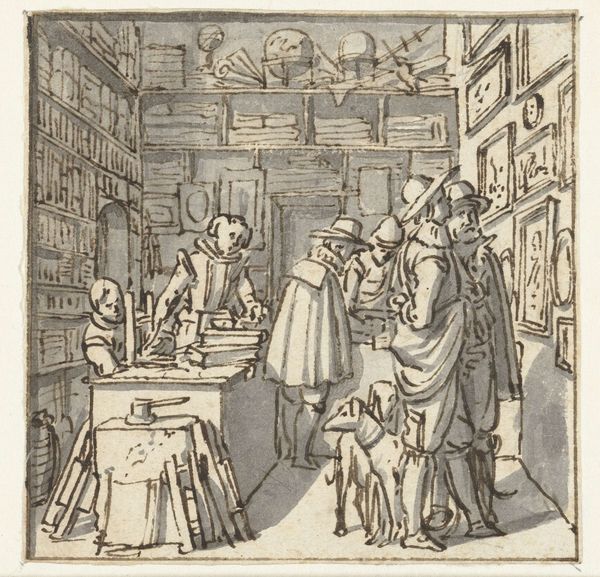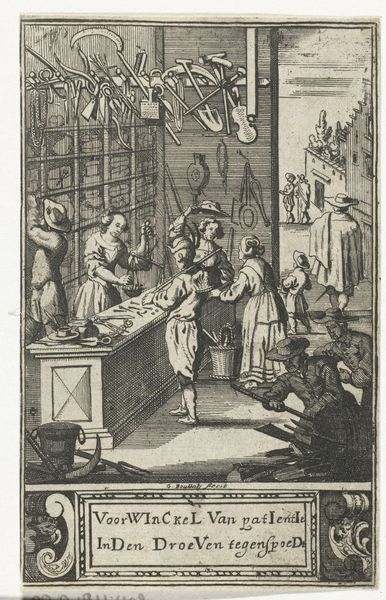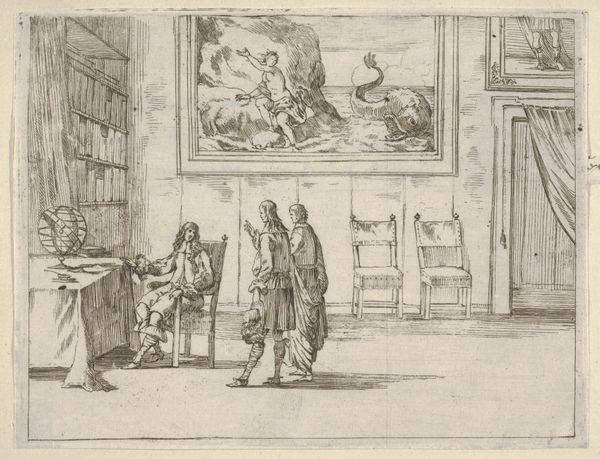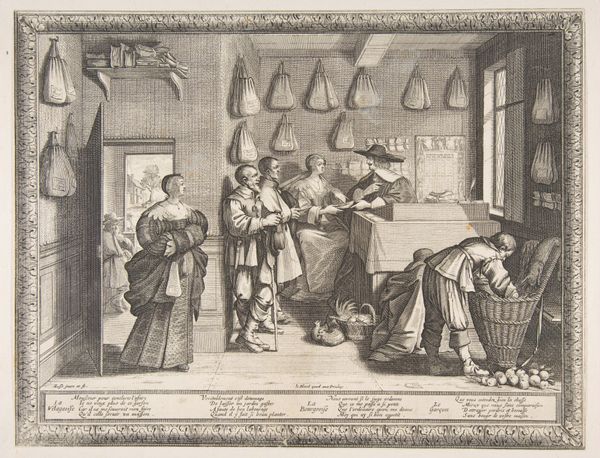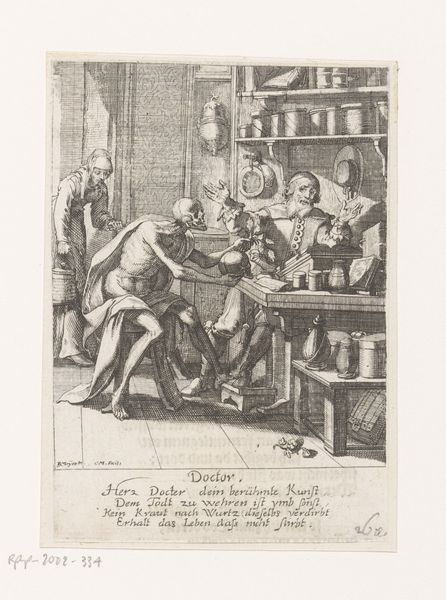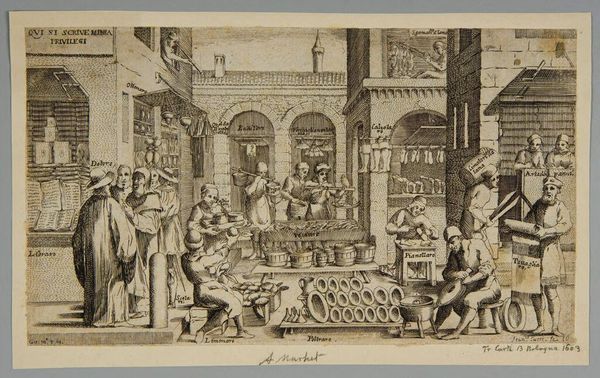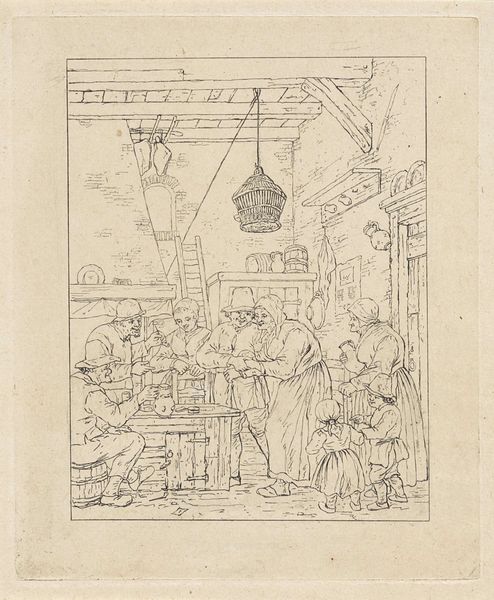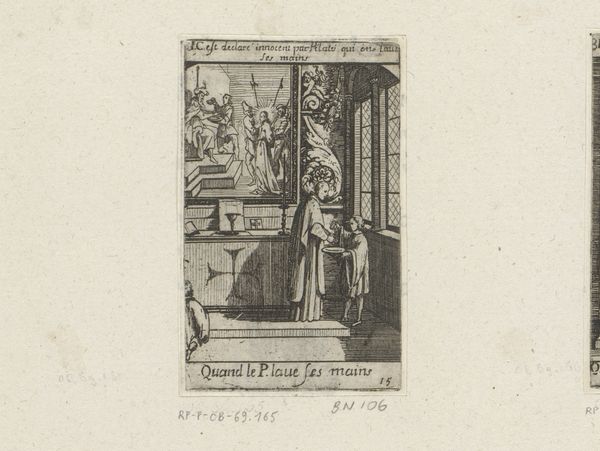
drawing, ink, pen
#
portrait
#
drawing
#
aged paper
#
toned paper
#
narrative-art
#
dutch-golden-age
#
mechanical pen drawing
#
sketch book
#
figuration
#
personal sketchbook
#
ink
#
pen-ink sketch
#
pen work
#
sketchbook drawing
#
pen
#
genre-painting
#
storyboard and sketchbook work
#
sketchbook art
Dimensions: height 76 mm, width 76 mm
Copyright: Rijks Museum: Open Domain
Editor: Here we have Salomon de Bray's "Mannen in een boekenwinkel," likely created sometime between 1607 and 1678. It's an ink drawing, and the aged paper gives it a certain… depth. What do you make of it? Curator: Considering this work as a material object immediately points us to the economics of its creation. Ink, paper, the artist’s time – these were all commodities. The availability of these materials speaks volumes about the social and economic context of 17th century Netherlands. Think about the bookshop itself - what sort of economy supports such a space? Editor: So, you're saying the drawing isn't just about what's depicted, but also about the materials and the social structures that allowed for its creation? Curator: Exactly. The 'mechanical pen drawing' technique implies a degree of reproducibility, aligning with early modern print culture. Consider the labor involved, the mass production of books versus the singular act of drawing, and the consumption of both. Editor: I see. So it's about connecting the physical creation of the image with the wider economic reality. What about the depiction of the books and art in the shop, what impact would it have at that period? Curator: Indeed. Moreover, observe the setting—the interior of a bookstore. Were books easily available? For whom? How do these objects of culture reflect a hierarchy? The arrangement of these commodities are not accidents; this deliberate structure gives hints to social class and status in society. These were likely luxuries purchased for a few, and the drawing style further reiterates its market to consumers. Editor: It’s fascinating to think about the relationship between art and commerce like that, how the creation and circulation of art is shaped by economic forces. Curator: And that is precisely where we, as viewers, discover meaning - not only in subject, but through considering art as a material practice.
Comments
No comments
Be the first to comment and join the conversation on the ultimate creative platform.
